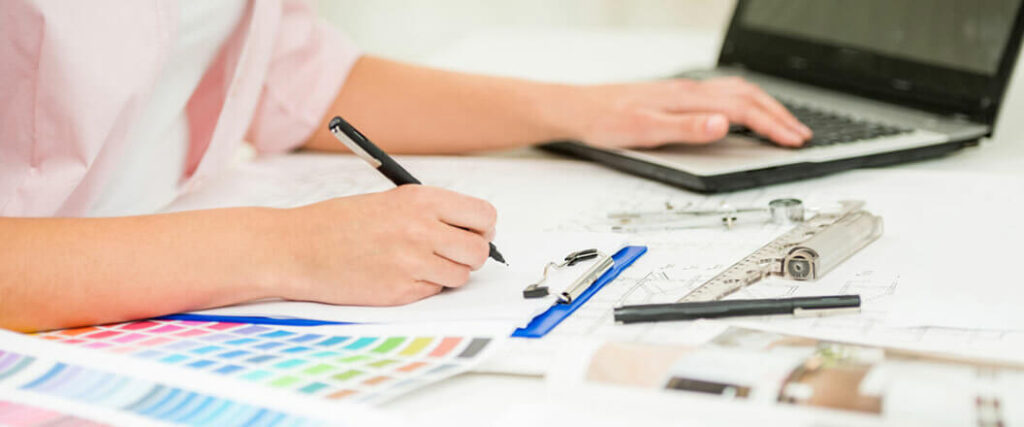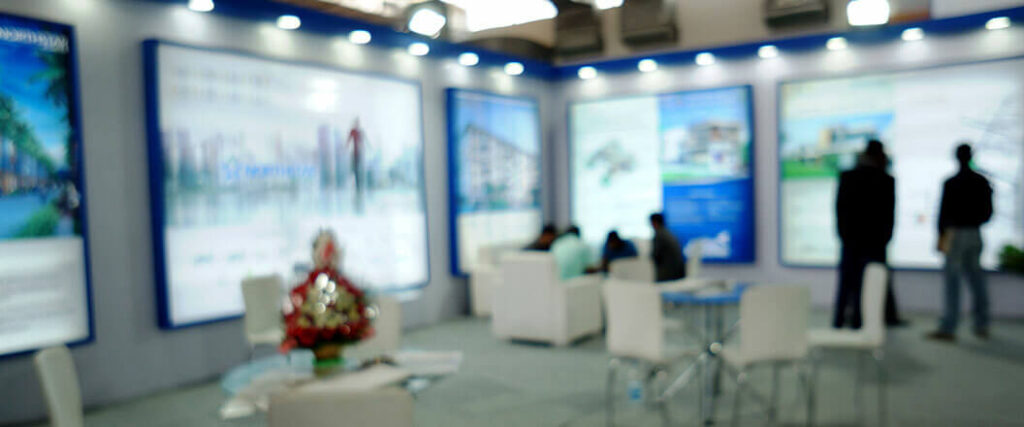
 Copy URL to Clipboard
Copy URL to Clipboard
Trade show decorators are responsible for crafting engaging displays and environments at exhibitions. Their creative touch transforms ordinary spaces into experiences that deliver the essence and intent of each brand. However, exhibitors often face challenges when coordinating with decorators, from aligning creative visions to managing tight schedules. These decorators also work with logistics providers, ensuring every detail meets the exhibitor’s needs.
The International Association of Exhibitions and Events (IAEE) asserts that trade show decorators are key to crafting engaging exhibitions. They change spaces into captivating, brand-aligned experiences. Their knowledge of visual storytelling and process management is needed to create memorable trade show presentations.
Find out more about how decorators contribute to trade shows, and how they work alongside other roles, as we continue.
Table of Contents

A trade show decorator is the creative force that transforms a simple space into a brand’s storytelling platform. When a business decides to become an exhibitor at trade shows, usually a decorator is their first call.
The role of trade show decorator includes the following:
Decorators are instrumental to a successful trade show, and success can be a huge boon to exhibitors, as the following statistics show.
| 15.6 billion dollars | Revenue generated by trade shows. |
| 51 percent | Attendees who request a meeting after the show. |
| 46 percent | Attendees who are nearing their final buying decision. |
Source: tradeshowlabs.com
Trade show exhibitors need to establish relationships with experienced decorators to make their mark at conventions. As such, it’s important that the two parties stay in touch throughout the trade show process.
The collaboration between trade show decorators and exhibitors can be broken down into three stages: before, during, and after the show.
Prior to the show, the following topics must be addressed.
With these plans in place, exhibitor and decorator alike will be ready for the day of the show.
While the trade show is going on, the parties will deal with:
After a successful show, the decorator and exhibitor still have work to do.
Some post-show tasks these two roles must take on include:
These interactions ensure that the booth looks great and communicates the exhibitor’s vision. It also allows decorators and exhibitors to adapt to challenges that may arise.

A trade show manager blends strategic planning, team coordination, and problem-solving abilities to ensure every aspect of the trade show aligns seamlessly.
Key duties of a trade show manager include:
Trade show managers need to possess a balance of creative vision and practical execution. Their ability to manage multiple aspects of the show all at once is crucial for its overall success.
In the evolving landscape of trade shows, technology plays a vital role in enhancing both management and execution. It streamlines processes, enhances communication, and brings a new level of innovation to trade show designs.
The following technological advancements have greatly contributed to the improvement of trade show management.
These advancements not only make the jobs of trade show managers and decorators easier, they open up new possibilities for making more engaging and successful shows.
Another role in trade shows that often works in tandem with decorators and managers is that of the logistics provider. Their main responsibility to ship cargo in and out of the trade show location, but there’s a little more to it than that.

Trade show logistics are somewhat specialized, requiring drivers to do more than simply show up, drop off their cargo, and leave. Due to the size and scale of these events, shippers are often required to stage cargo at a warehouse near the event weeks in advance. This way, freight can be delivered to the event during the setup phase in brief, scheduled windows of time.
In the following scenario, you can get an idea of what a typical trade show logistics process looks like.
For the purposes of this scenario, we’ll deal with two fictional companies: Roberts Trade Show Shipping and the exhibitor, AAA Electronics.
Staging
Delivery
Trade Show Exhibit Setup
Breakdown and Removal
Return Shipping
From start to finish, trade show decorators may need to work together with managers and logistics providers to address the exhibitor’s needs. This is especially true when it comes to trade show display booths, which all participants need to show off their goods and services for potential buyers.
Trade show decorators create visual flair that encourages attendees to engage with exhibitors and create new business relationships. Of course, without booths and materials to decorate, their job would become rather difficult. That’s where logistics providers, such as ourselves, come in.
USA Trade Show Shipping has a vast network of delivery vehicles and warehouses located strategically throughout the United States. From storage and staging to delivery and returns, we’re equipped to get your goods to the trade show floor on time and in perfect condition.
Our trade show services include:
If you’re an exhibitor in need of skilled logistics assistance at your next trade show, reach out to us online or give our team of trade show shipping experts a call at (866) 415-8986. We’re ready to help you WOW attendees at your next trade show.
Need help shipping your trade show booth and materials? Fill out a short form or give us a call and one of our trade show specialists will answer your questions.
 Copy URL to Clipboard
Copy URL to Clipboard
Need help shipping your trade show booth and materials? Fill out a short form or give us a call and one of our trade show specialists will answer your questions.